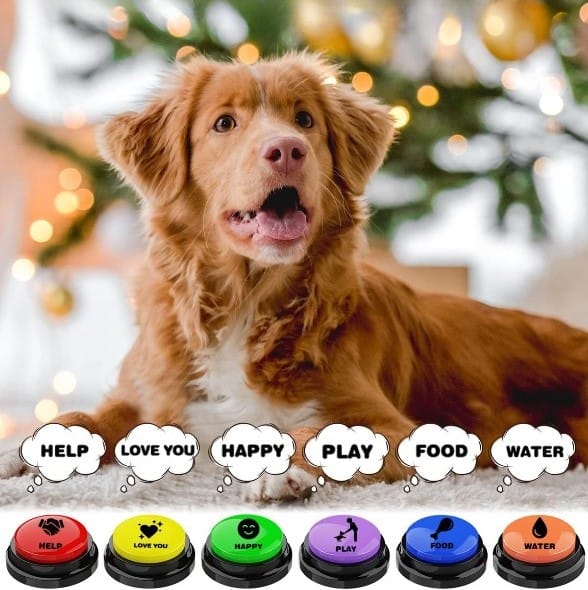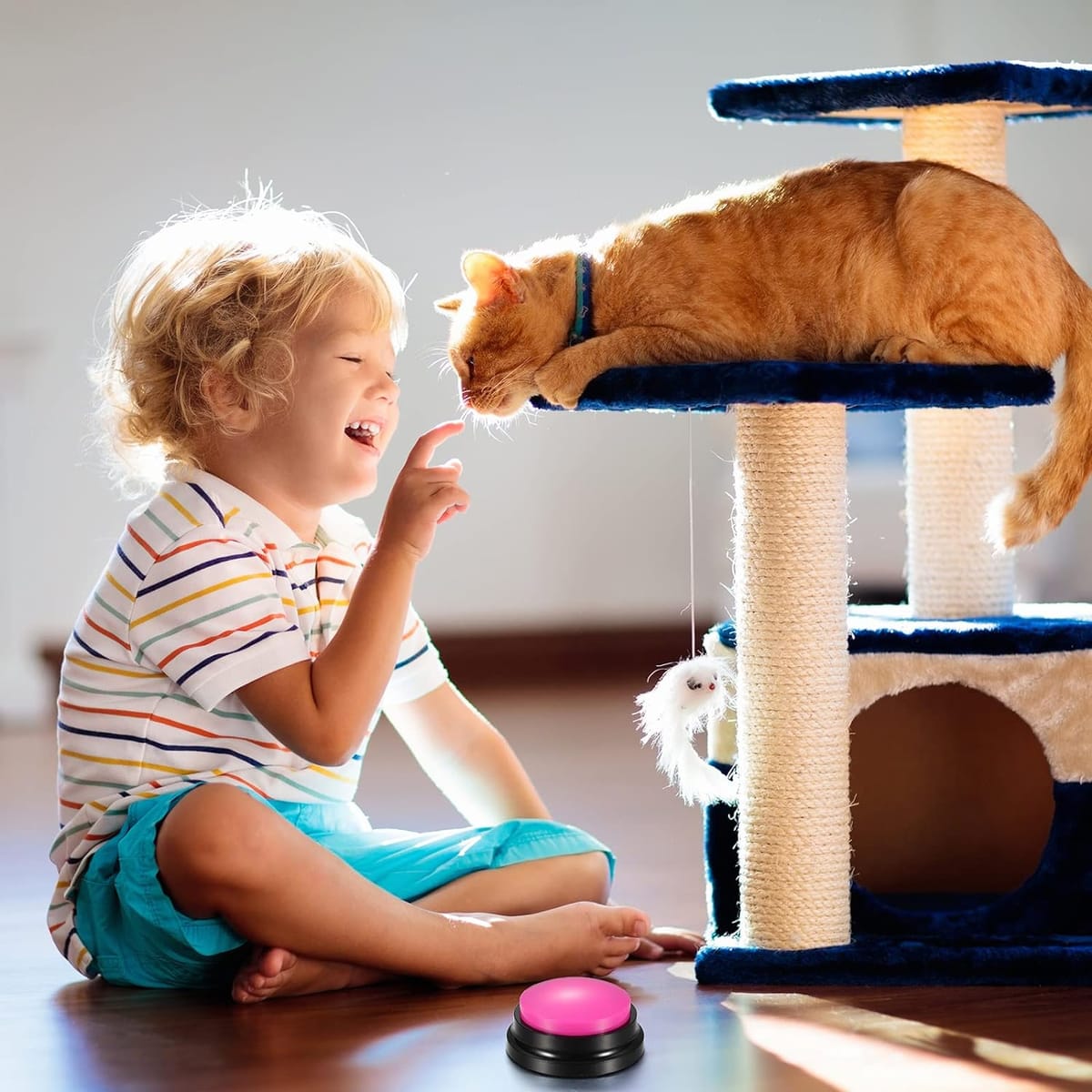Key Takeaways:
- Dog talking with buttons is a method that allows dogs to communicate using durable plastic buttons that emit words or sounds.
- Speech-language pathologists and pet parents are exploring this method to enhance communication between humans and pets.
- Training your dog to use talking buttons involves patience, consistency, and understanding of your dog's learning process.
The ability of dogs to communicate with humans has always been a fascinating aspect of the bond between pet parents and their furry companions. With the advent of dog-talking buttons, this communication is taking a revolutionary leap forward. This article delves into the science and methodology behind teaching dogs to express themselves using buttons, the role of speech therapists in this field, and practical tips for pet owners who want to embark on this communicative journey with their pets.
The Emergence of Dog-Talking Buttons
The concept of dog talking with buttons has gained significant attention thanks to the work of Christina Hunger, a speech-language pathologist who has pioneered the use of augmentative and alternative communication (AAC) devices for dogs. Hunger's dog, Stella, has been able to express her needs, thoughts, and feelings by pressing buttons that correspond to different words. This breakthrough has opened up a new realm of possibilities for pet communication.
How Dog-Talking Buttons Work
Dog talking buttons are designed to be pressed with a paw, emitting a specific word or sound that represents an object, action, or desire. These buttons are typically made of durable plastic and are sold separately or as part of a pet starter set. The buttons work on the principle of operant conditioning, where dogs learn to associate the pressing of a button with the corresponding outcome or response from their human companions.
The Role of Speech Therapists in Canine Communication
Speech therapists, like Christina Hunger, have been instrumental in adapting human speech therapy techniques to teach dogs how to communicate. By understanding the principles of human language acquisition and applying them to dogs, speech therapists are discovering that many dogs are capable of learning to use multiple buttons organized in a way that they can effectively communicate their needs and desires.
Training Your Dog to Use Talking Buttons
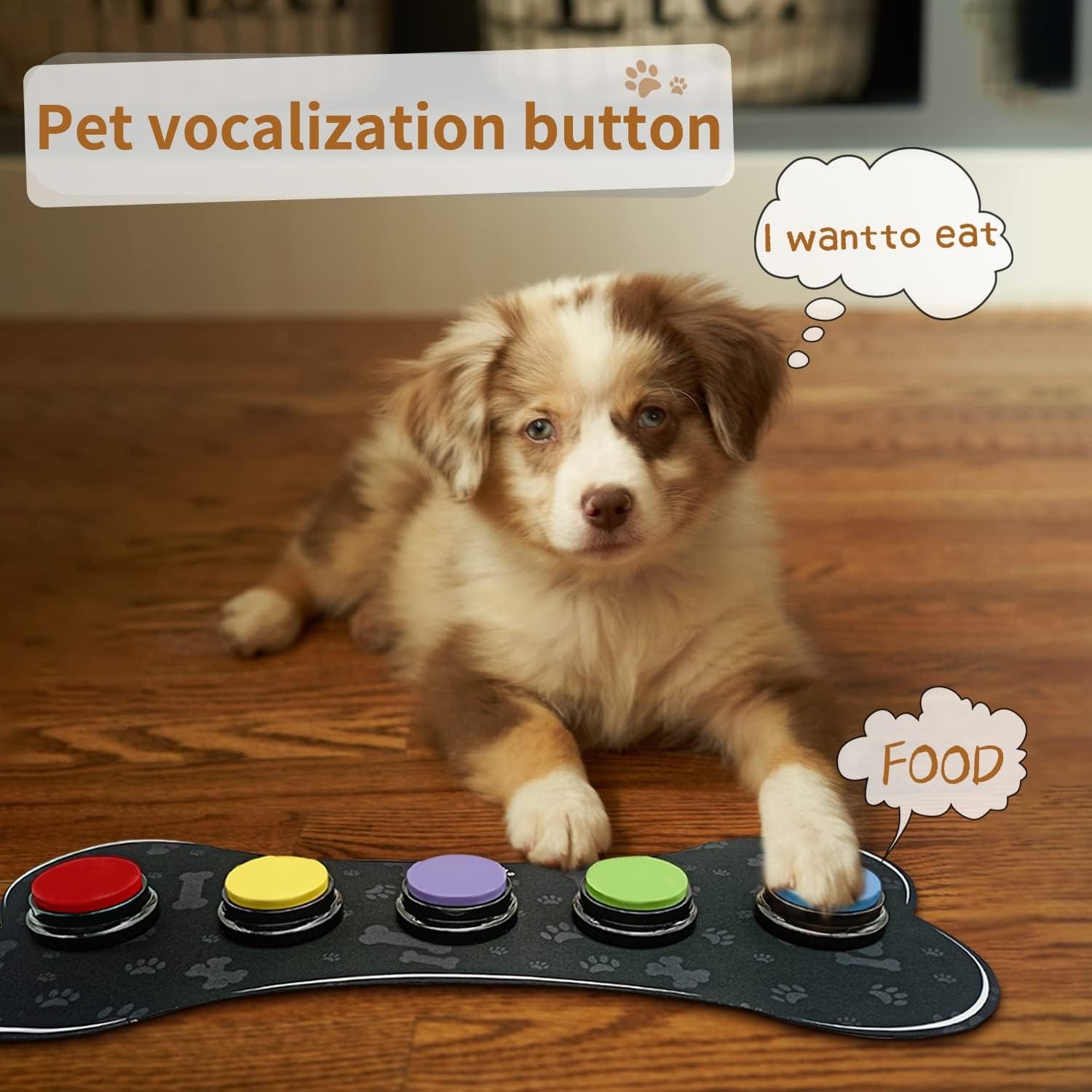
Teaching your dog to use talking buttons requires patience and a systematic approach. Pet parents should start with a starter kit that includes a few buttons with basic words such as "food," "play," "outside," or "bed." Training involves demonstrating the use of the button and encouraging your dog to mimic the action. Consistency and positive reinforcement are key to helping your dog learn the association between the button and the corresponding action or object.
The Cognitive Science Behind the Buttons
Research in comparative cognition labs, such as those at universities, is shedding light on the cognitive abilities of dogs and other animals. Studies are exploring how animals understand human language and how they can use tools like talking buttons to communicate. This research is not only fascinating but also has practical implications for enhancing the human-animal bond. Enhancing Communication with a Speech-Language Pathologist A speech-language pathologist, often involved in human language development and rehabilitation, can play a pivotal role in enhancing the way we communicate with our canine companions. By applying their expertise in language acquisition, they can tailor training programs that effectively teach your dog to use talking dog buttons. This collaboration between speech therapists and pet owners opens up new avenues for dogs to express their needs, wants, and even their emotions, fostering a deeper bond between the owner and their furry friend.
Involving a speech pathologist in your dog's training regimen can provide a structured approach to teaching your pup how to speak using buttons. These professionals can offer insights into the cognitive abilities of dogs and adapt speech therapy techniques to suit a dog's learning style. For instance, they can help determine which button means what to a dog and how to encourage them to press it. Doing so ensures that the communication through buttons is clear, consistent, and rewarding for both the dog and the owner, paving the way for a more interactive and fulfilling relationship.
Comparative Cognition Lab Discoveries in Canine Communication The Comparative Cognition Lab at a leading university has been at the forefront of discovering the intricacies of how dogs understand and interact with their environment. Their research delves into the cognitive processes that enable dogs, much like the famous dog Stella, to learn how to push buttons and communicate with their owners. By studying the body language and behavioral patterns of dogs, these labs are uncovering the potential for a richer, more nuanced form of interaction between dogs and humans, beyond the basic commands and responses.
These labs are not only contributing to the academic understanding of canine cognition but are also providing practical applications for pet owners. For example, they may offer a starter kit complete with an activity guide and six buttons, each pre-recorded with a word or phrase. This allows owners to begin the journey of teaching their dog to talk, with the assurance that the methodology is backed by scientific research. The labs' findings also help in developing new and improved buttons that are easier for dogs to push, often requiring just a gentle touch or even equipped with AAA batteries for better responsiveness, making the learning process more fun and engaging for the pup.
The Interdisciplinary Approach to Canine Linguistics
The concept of a dog button has transcended the realm of novelty and entered a phase of serious scientific inquiry, where an interdisciplinary approach is pivotal. Linguists, animal behaviorists, and technologists are collaborating to refine the technology and its application. This synergy is crucial in understanding the nuances of canine communication and ensuring that the buttons are designed in a way that aligns with a dog's cognitive abilities. By studying the patterns of interaction between dogs and these devices, researchers are putting forth theories that could revolutionize our understanding of non-human language capabilities.
Speech therapists, often associated with human language acquisition and rehabilitation, are now contributing their expertise to the canine world. Their knowledge of phonetics, language development, and cognitive processes is invaluable in creating structured training programs for dogs. These professionals are exploring how dogs process commands and are working to adapt speech therapy techniques to suit canine learners. This collaboration is not only enriching the field of animal communication but also providing speech therapists with a new avenue to apply their skills in the same way they would with human clients.
Technological Advancements in Dog Communication Devices
As the idea of dogs communicating through buttons gains traction, technological advancements are keeping pace. The market is seeing the emergence of starter kits designed to make the process of teaching dogs more accessible to pet owners. These kits often include a set of programmable buttons that can be assigned specific words or phrases, allowing dogs to express their needs and thoughts by pressing them. The buttons are typically durable, easy to press, and guide how to introduce them to your pet effectively.
In parallel, developers are discovering innovative ways to enhance the functionality of these devices. Some are integrating machine learning algorithms to analyze the patterns in which dogs use the buttons, providing insights into their thought processes and helping owners better understand their pets. Others are experimenting with different forms of stimuli, such as visual or tactile signals, to see if they can be used in conjunction with auditory cues. This exploration into multisensory communication could open up new possibilities for pets beyond dogs, such as cats, to express themselves in a manner previously thought to be exclusive to humans.
Case Study: Alexis Devine and Bunny
Alexis Devine, a San Diego-based artist, and her dog Bunny have become social media sensations due to their use of dog-talking buttons. Bunny has learned to express herself using a board of buttons organized by categories. Devine's methodical approach and documentation of Bunny's progress provide an inspiring example for pet parents who want to teach their dogs to talk.
Practical Tips for Getting Started
When introducing your dog to talking buttons, it's important to begin with words that are relevant to your dog's life. Place the buttons in locations associated with the word, such as the "food" button near the feeding area. Use the buttons yourself to demonstrate their use, and encourage your dog to try pressing them. Celebrate successes and be patient with the learning process.
The Impact on Pet Parent Relationships
The use of dog talking buttons has the potential to transform the relationship between dogs and their owners. By giving dogs a way to express their needs and thoughts, pet parents can gain a deeper understanding of their pets' inner lives. This enhanced communication can lead to a more empathetic and responsive relationship, enriching the lives of both dogs and humans.
Incorporating Buttons into Daily Life
To effectively integrate talking buttons into your dog's daily routine, it's important to make the use of buttons a regular part of your interactions. Encourage your dog to use the buttons to ask for things they want, like going out the door or playing with a favorite toy. Over time, your dog will learn to rely on the buttons as a means of communication.
The Future of Canine Communication
As more pet parents and researchers explore the use of dog talking buttons, we can expect to see advancements in the technology and methodology. The future may bring more sophisticated devices and a greater understanding of animal cognition, further bridging the communication gap between pets and humans.
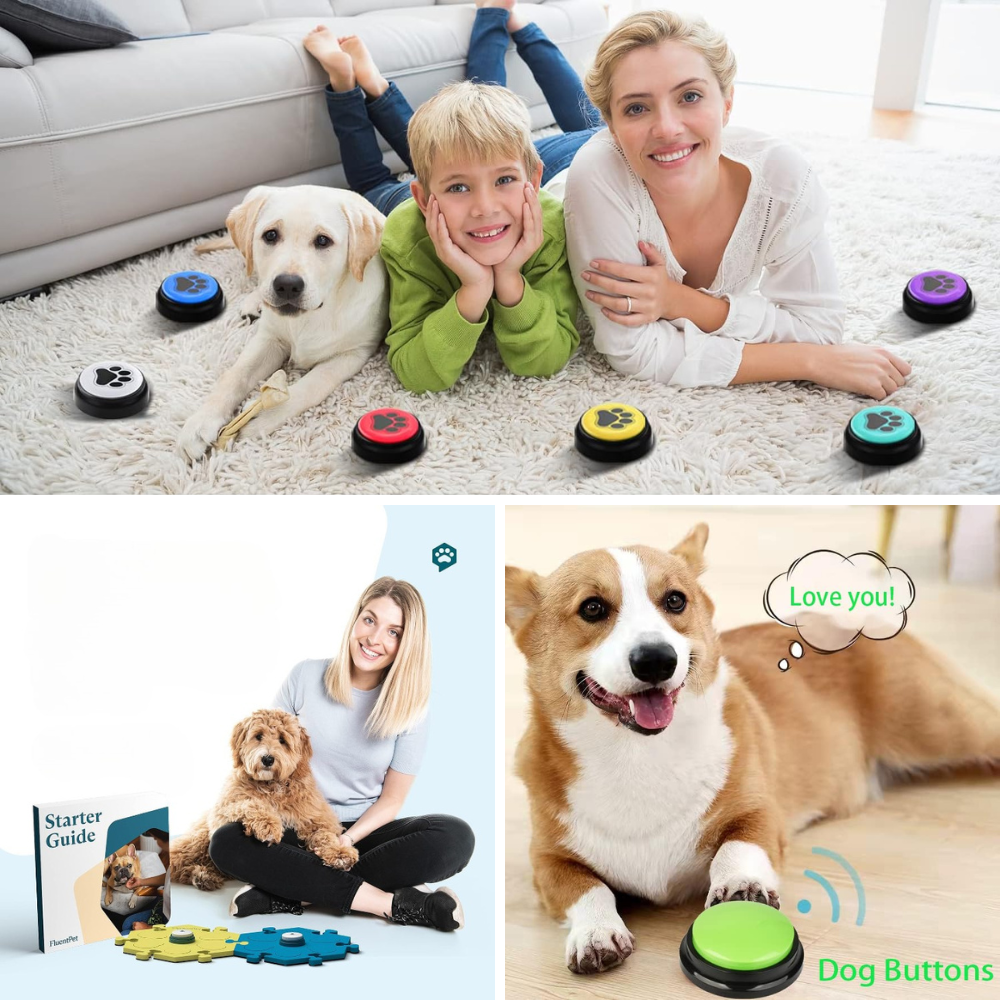
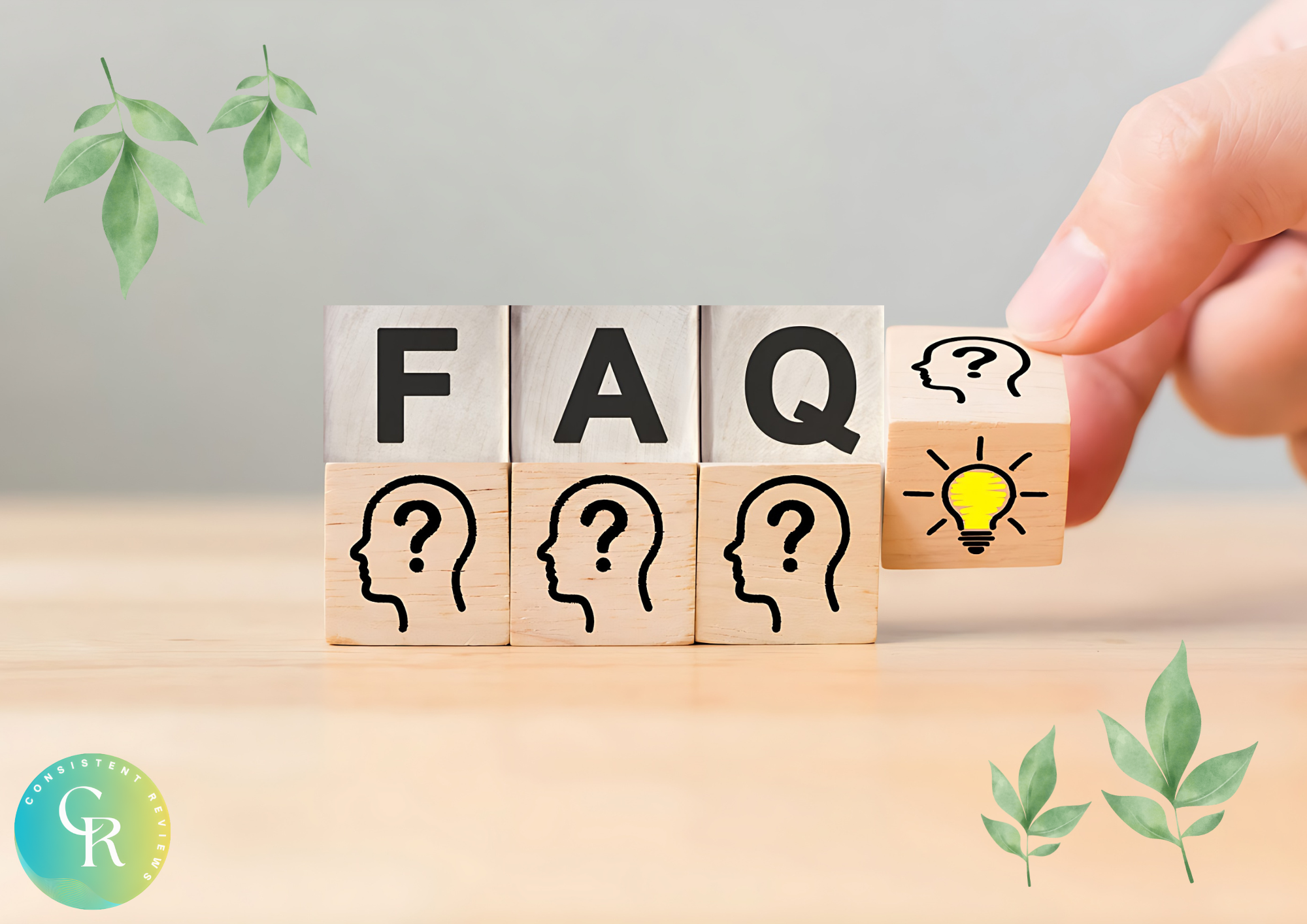
Can any dog learn to use talking buttons?
Yes, many dogs can learn to use talking buttons with proper training and reinforcement. However, individual dogs may vary in their learning speed and communication preferences. Some breeds known for their intelligence and trainability, such as border collies and poodles, may have an easier time learning to use talking buttons.
How many buttons should I start with when training my dog?
It's best to start with a small number of buttons, such as a six-button starter kit, focusing on essential words that are relevant to your dog's daily life. As your dog becomes more proficient, you can gradually introduce more buttons.
Are talking buttons suitable for other pets, like cats?
While the focus has been on dogs, there is potential for other pets, such as cats, to learn to use talking buttons. Each animal's personality and cognitive abilities will play a role in their ability to use this form of communication.
How do I teach my dog to talk buttons?
To teach your dog to communicate with buttons, use positive reinforcement. Start by introducing the button and rewarding them when they press it. Gradually progress to more complex tasks and celebrate their achievements. This method can be effective for dogs of all ages.
Can you buy the dog talking buttons?
The search results didn't provide information on this specific question. However, based on general knowledge, yes, you can buy dog talking buttons from various online marketplaces like Amazon, Petco, and specialty stores.
What famous dog has buttons to talk?
The search results didn't provide information on this specific question. However, one famous dog known for using buttons to talk is Bunny, a Sheepadoodle, who has been featured in numerous media outlets for her ability to communicate using a special soundboard.
What are common dog button words?
Common dog button words are words that are commonly used in dog training to teach dogs specific commands or actions. These words are usually short and easy to remember, making it easier for dogs to associate them with certain behaviors. Some examples of common dog button words include "sit," "stay," "come," "down," and "fetch." These words are often accompanied by hand gestures or physical cues to further reinforce the desired behavior. Consistency and repetition are key when using dog button words, as they help dogs learn and understand what is expected of them.
Can all dogs learn buttons?
The search results didn't provide information on this specific question. However, while many dogs can be trained to use communication buttons, the success may vary based on the individual dog's temperament, patience, and training.
How long does it take for dogs to learn talking buttons?
The amount of time it takes for a dog to learn talking buttons varies depending on the individual dog and their training. Some dogs may pick up on the concept quickly and be able to communicate using the buttons within a few weeks, while others may take several months to fully understand and use the buttons effectively. Consistent training and positive reinforcement are key factors in teaching a dog to use talking buttons. It's important to be patient and consistent with the training process, as every dog learns at their own pace.

Dog talking with buttons is an innovative method that empowers dogs to communicate with their human companions using specially designed buttons. This approach, pioneered by speech therapists and embraced by pet parents, is grounded in the principles of operant conditioning and human language acquisition. Training your dog to use these buttons involves patience, consistency, and a deep understanding of your pet's learning process. As this field continues to evolve, the bond between dogs and their owners is set to reach new heights of mutual understanding and empathy.
